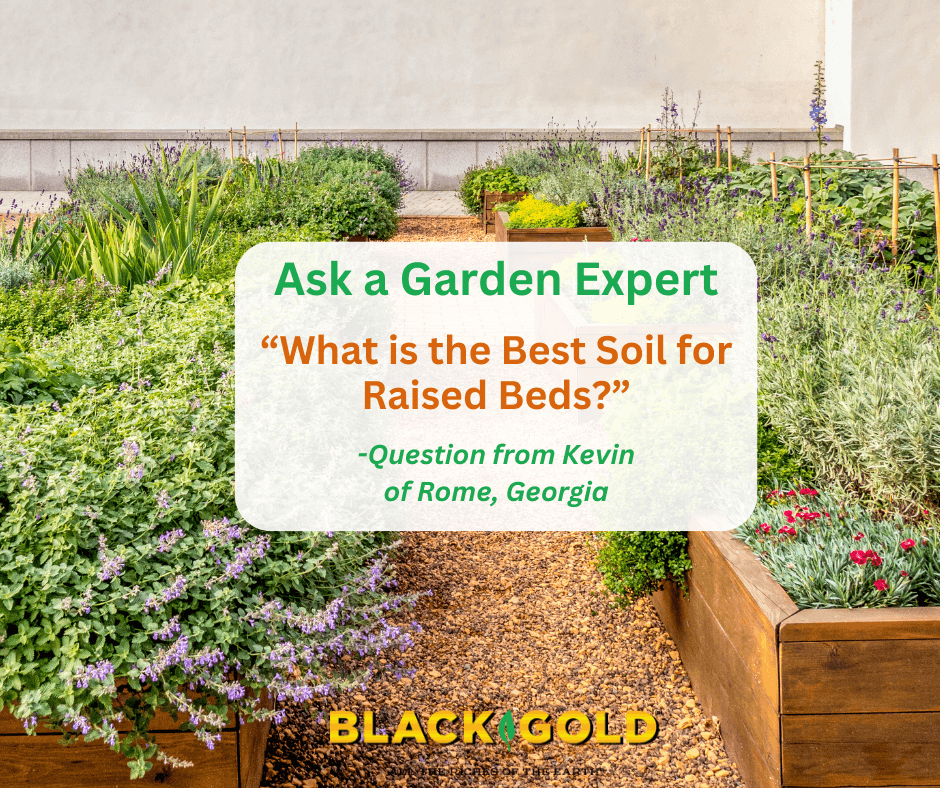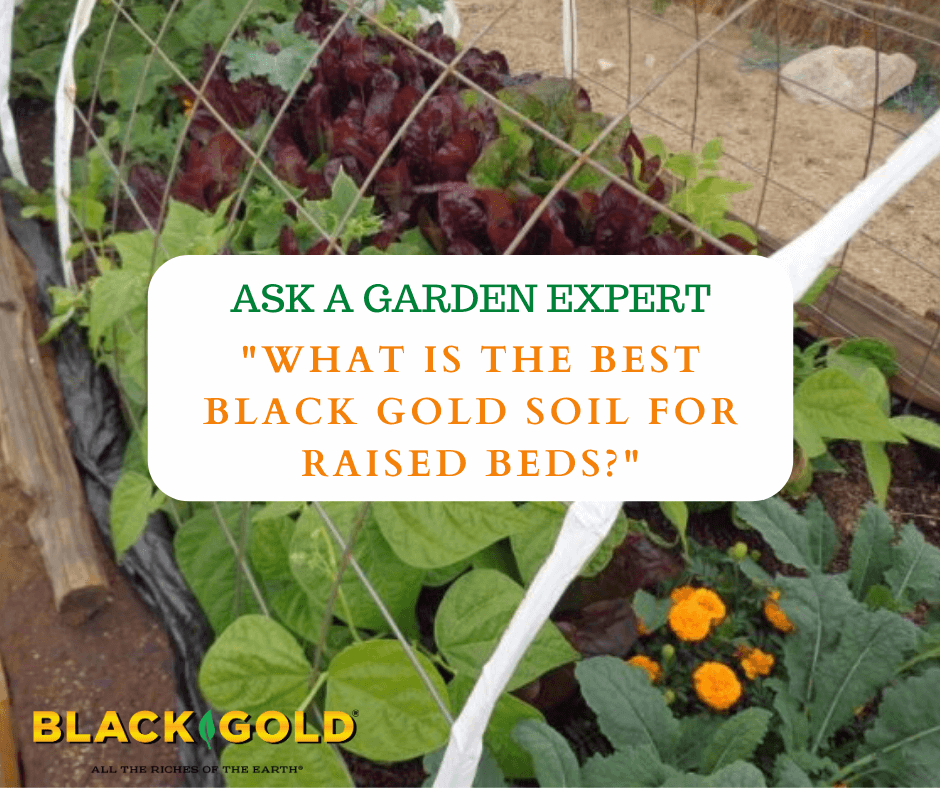
“I built 2 beds measuring 4′ x 16′ and 2 foot deep. I don’t think I need a Black Gold mix for the bottom half. What is something I could [add to] the bottom half of the boxes? Also are Black Gold products meant as a supplement to the soil or a soil replacement?” Question from Kevin of Rome, Georgia
 Answer: We have many amendments and soils suitable for raised bed gardening, but we now sell a natural raised bed soil that is specially formulated for your type of garden. Black Gold® Natural & Organic Raised Bed & Potting Mix is just for raised bed gardening, is sold in cost-effective large bales and is OMRI Listed for organic gardening. If you wish to supplement with additional soils or amendments, try the following bulk and/or bagged options.
Answer: We have many amendments and soils suitable for raised bed gardening, but we now sell a natural raised bed soil that is specially formulated for your type of garden. Black Gold® Natural & Organic Raised Bed & Potting Mix is just for raised bed gardening, is sold in cost-effective large bales and is OMRI Listed for organic gardening. If you wish to supplement with additional soils or amendments, try the following bulk and/or bagged options.
- Quality screened bulk compost, leaf compost, or mushroom compost – These are all rich and fortifying but high in organic matter, which eventually breaks down over time and needs to be replenished.
- Quality screened bulk topsoil – Topsoil contains mineral soil as well as organic matter, so not all of its components will break down over time.
- Bagged compost, such as Black Gold Garden Compost Blend – This is a good option for smaller-scale raised bed gardening. Treat it as you would bulk compost.
Products sold in bulk are generally available at large landscape supply centers and are sold by the yard. Add topsoil of compost at a ratio of one part topsoil or compost to two parts bagged mix.
Before ordering any soil, be sure you know how much you need by using the soil application formula. Also, be sure to feed your soil with quality fertilizer formulated for vegetable gardening.
Soil Application Formula
To find the amount of soil you will need, determine the volume of your square or rectangular bed by measuring its length, width, and height. Then use the following formula: V = L x W x H.
V = soil volume
L = bed length
W = bed width
H = bed height
So, if your bed happens to be 6 feet x 4 feet x 1.5 feet, multiply 6 x 4 x 1.5 = 36 cubic feet. Our raised bed soil is sold in 2.2 cf bales. To determine the amount of bagged soil you might need (36 cubic feet/2.2 cf bales= 16). If you plan to add topsoil at a 1:3 ratio, then you will need 2/3 mix (24 cubic feet (10.66 2.2 cubic foot bags of raised bed potting mix)) and 1/3 topsoil (12 cubic feet of topsoil). If you want to buy topsoil by the yard, then you must know yardage. Divide the answer in cubic feet by 27 to get the number of cubic yards you might need (36/27= 1.3 cubic yards).
Happy gardening,
Jessie Keith
Black Gold Horticulturist
(For more tips click here for a full overview of how to prep a new vegetable garden from start to finish.)
I hope that these tips help.
Happy gardening,
Jessie Keith
Black Gold Horticulturist


